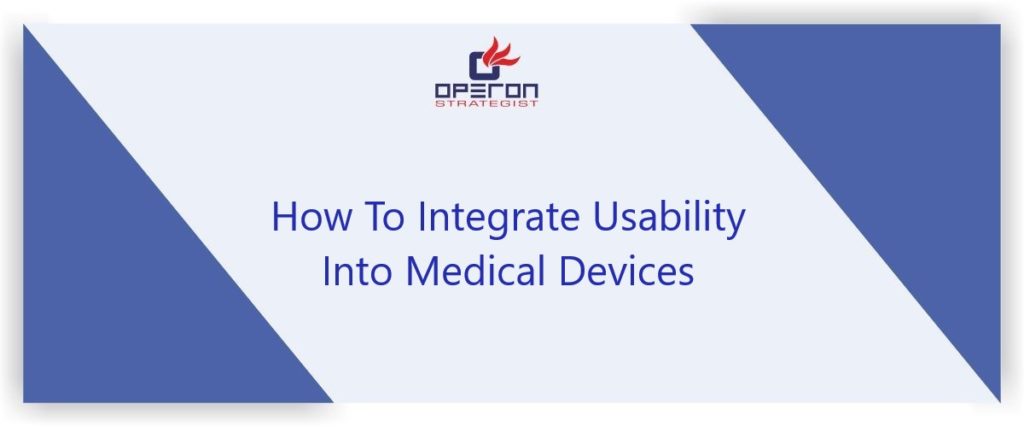How To Integrate Usability Into Medical Devices
Integrate Usability into medical devices for a better risk based testing process that includes testing how easy simple and safe a medical device is. It is a prerequisite to test convenience on medical devices to guarantee that the devices itself fulfills government guidelines.
Factors that effect to integrate usability into medical devices or an products incorporates the accompanying: time, assets, and effectiveness. On the off chance that an incident that happens during these usability tests, potential reasons and the reason for the occurrence are evaluated. Typically, a medical device ought to be tried by in any event 5 users. From these tests, the spectator can decipher whether if the structure of the medical device or UI user-interface is protected and simple to utilize.
Integrate Usability into medical devices engineering has become a basic piece of new product development in the medical industry. A vigorous and provable usability engineering process is currently basic to pick up US FDA clearance for any new device. For some organizations, this can appear to be an overwhelming possibility, and particularly if the essential aptitude isn’t in-house.
Operon Strategist is FDA 510 k process consultant helps the clients to register SBU (Small Business Unit), if applicable.We also assist with the establishment registration and device listings to make suitable the supply of medical devices in the US
How to integrate usability into medical devices?
- Know your users and environment.
- Know how to interact with the device.
- Add requirements to control use errors.
- Integrate usability into medical devices early and often.
Know your users and environment
Consider who your clients are and where they’ll utilize the device? Consider what qualities, for example, information, preparing, and physical capacities or confinements are genuinely one of a kind as it identifies with utilization of the device and make a list. This is significant in light of the fact that each unmistakable client gathering will be tried independently down the line in usability approval (commonly at any rate 15 clients for every gathering). All the more comprehensively, this activity empowers the engineer to structure with sympathy for the client, a key guideline of client focused plan.
Know how to interact with the device.
You don’t need to bother with a model to begin conversing with clients. Utilize their contribution to build up an assignment investigation to see every client activity and how the device could react. This gives a system to understanding the distinctive use situations for your device. Storyboarding and procedure mapping are helpful instruments to pick up experiences into how individuals collaborate with the product under every situation.
Add requirements to control use errors.
Include controls recognized in the use error examination to the device necessities particular. This guarantees the structure incorporates proper highlights for usability and gives recognisability to show control execution. In a perfect world these controls ought to be executed through upgrades in the plan of the device (i.e., not through preparing or managerial controls). Toward the day’s end, the structure of the device itself should welcome clients to utilize it appropriately and keep away from dangerous circumstances.
Integrate usability into medical devices early and often.
Gather feedback from clients at whatever point you have the chance. For instance: even before you have a model, consider leading client meetings to see how they collaborate with comparative or predicate product. When prototypes or storyboards are accessible, lead developmental usability studies to recognize conceivable use mistakes and open doors for development, and further refine expected use situations. At the very least, you should finish a developmental report that intently impersonates the arranged summative ease of use approval as a “dry run” before the structure is concluded. Utilize the aftereffects of each examination to repeat on the undertaking investigation, chance evaluation, necessities, and plan. Repeat at that point approve, not the reverse way around.
Integrate Usability into medical devices testing should also include not only testing the device during its prototype stage but also testing the device after the device itself has been created. Furthermore, testing the device’s instructions is also a good idea, especially since the instructions itself may contain faults. These faults may result in an unsafe use of a medical device. When the medical device is released to the public, it doesn’t mean one should stop testing the product. Devices can be refined based on users’ criticism and feedback. Integrating usability into medical device is a critical, yet confusing component of medical device design, development, regulatory, marketability, and product success. Although three things are clear when it comes to your processes around usability for your medical device: do it early, do it right, and don’t try to cut corners.More info visit:https://www.operonstrategist.com/

